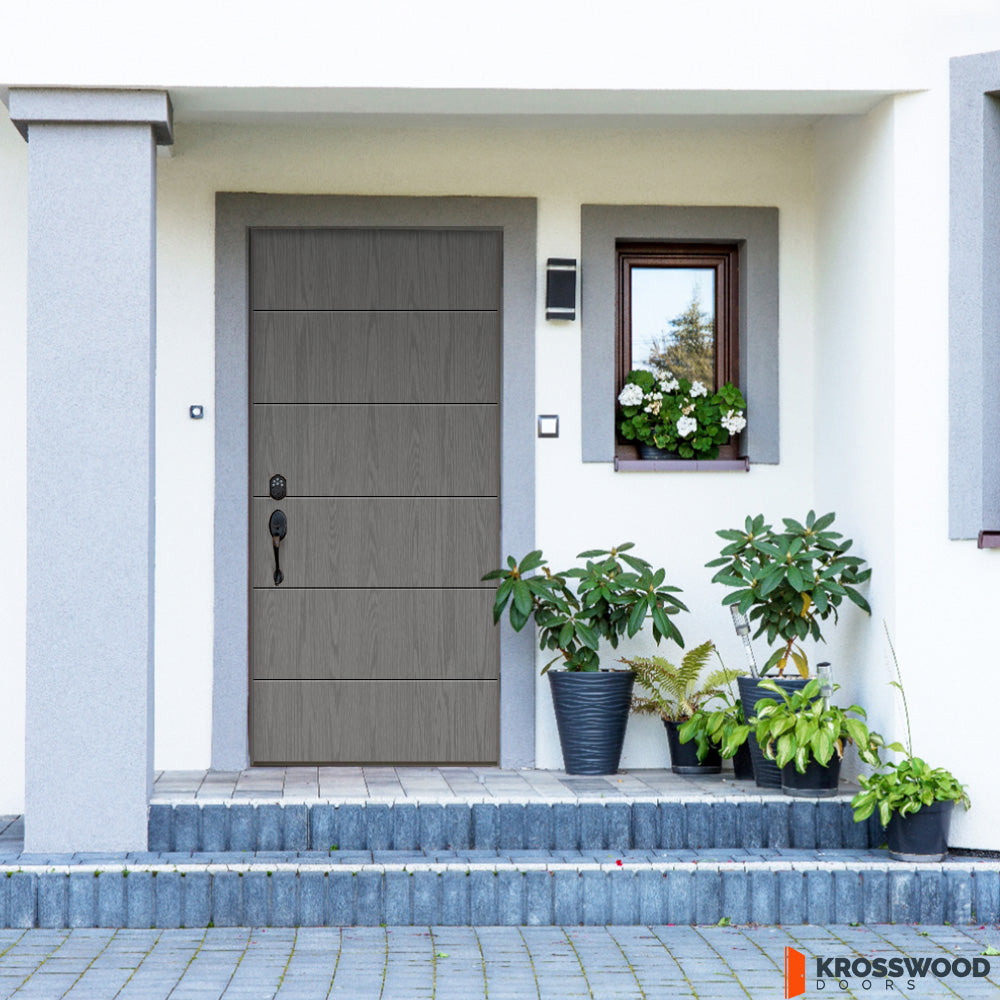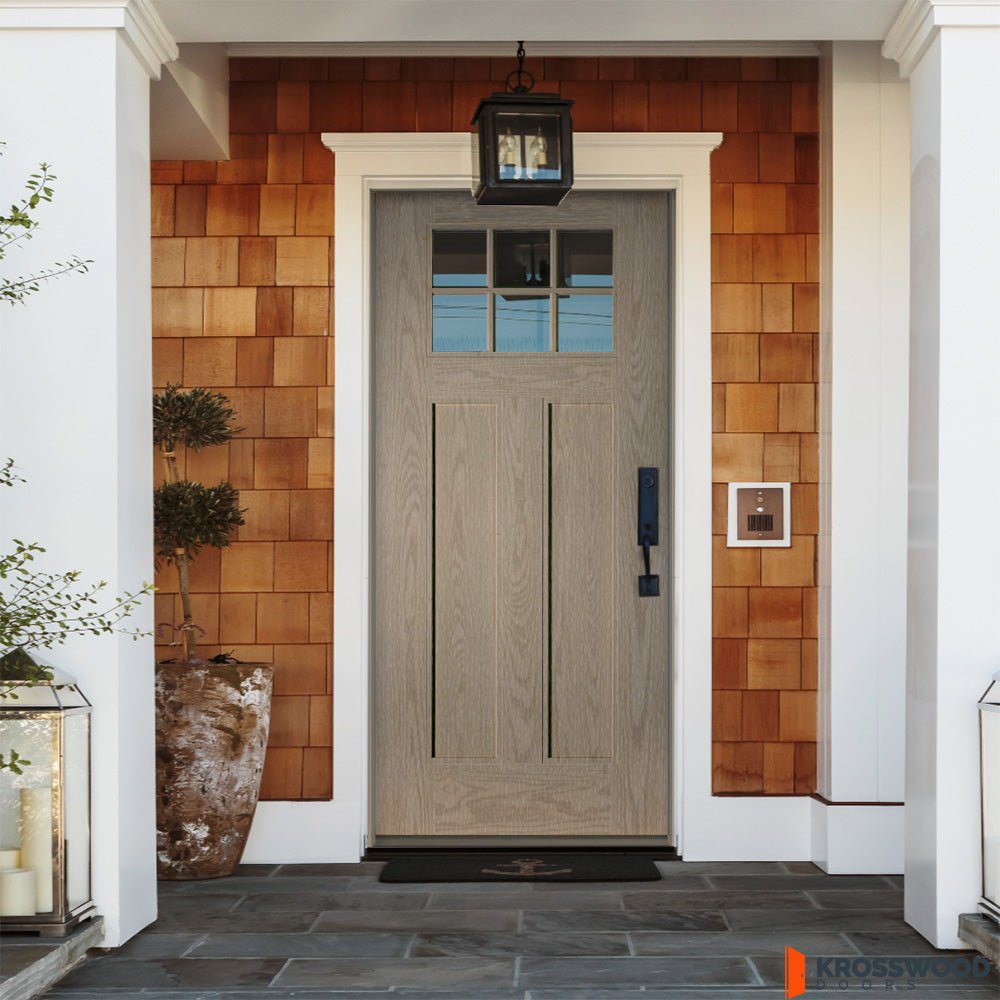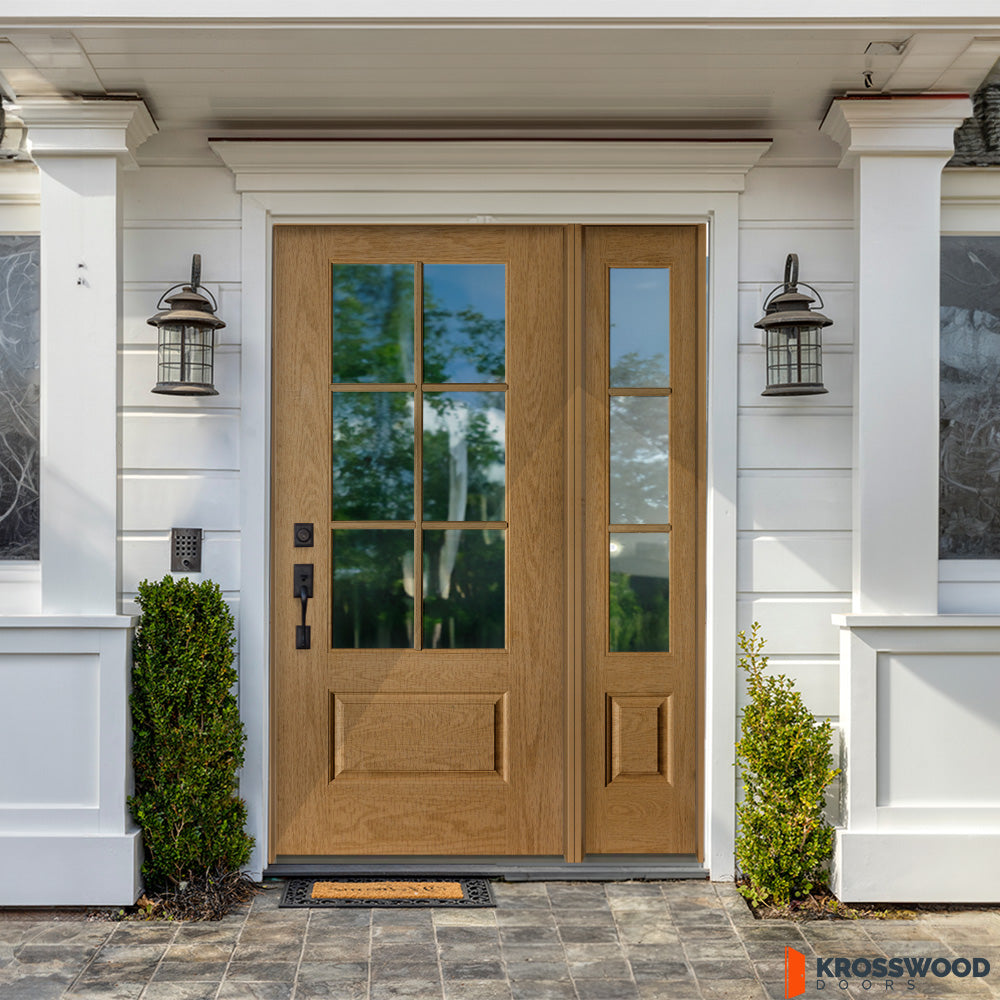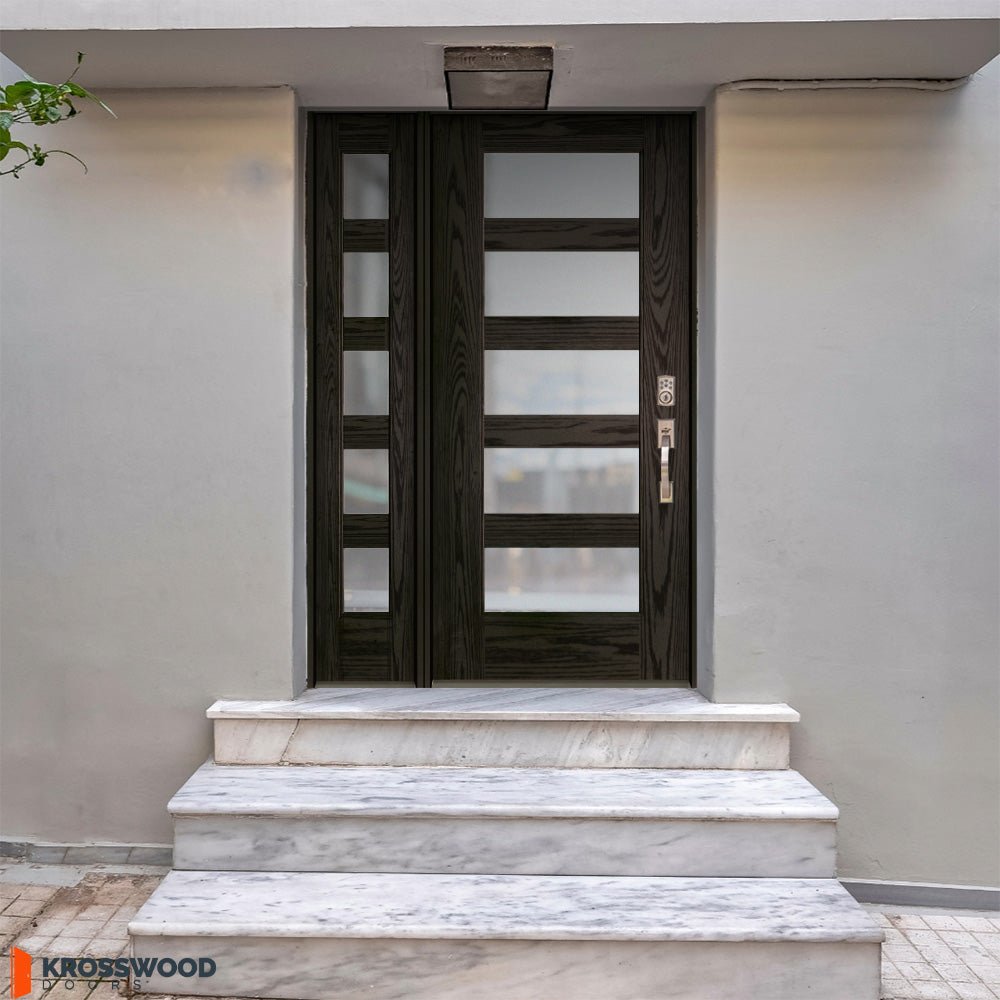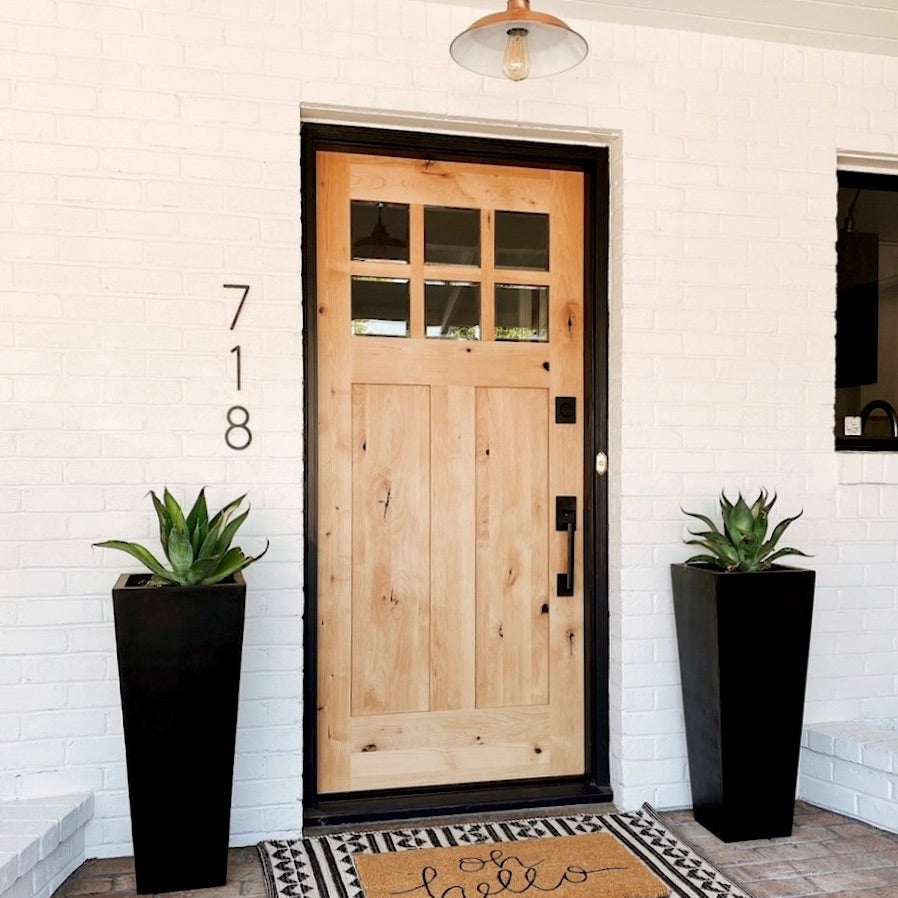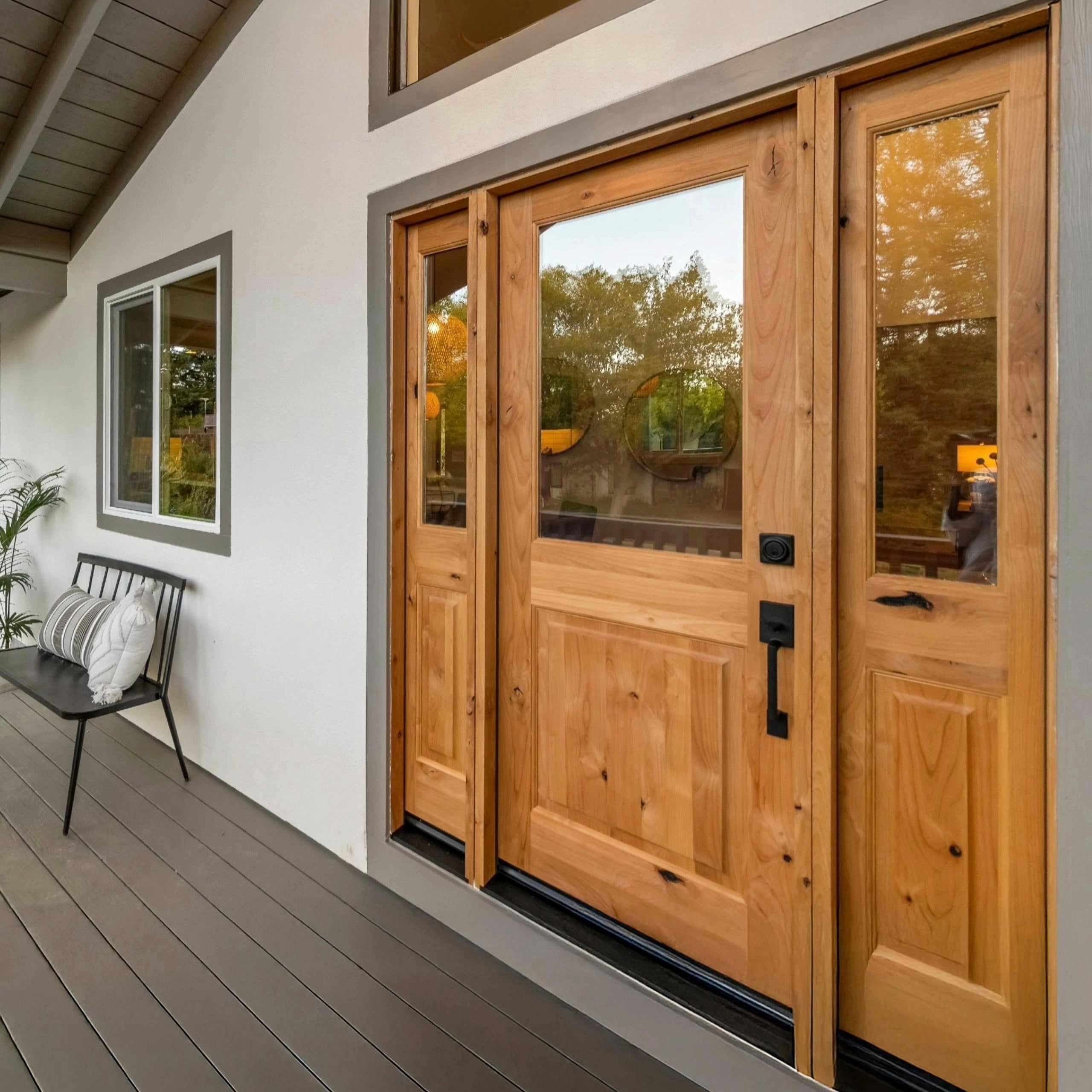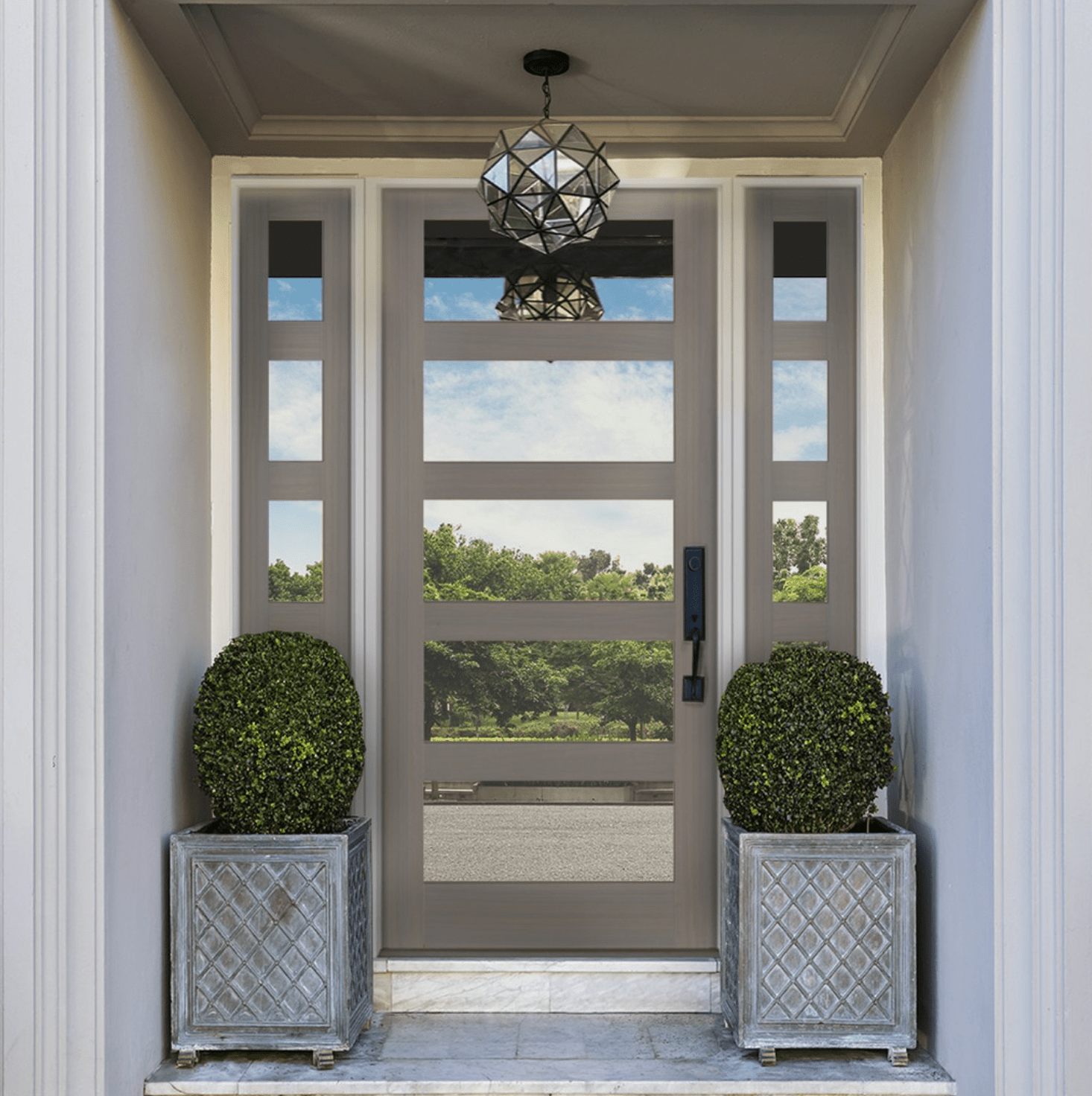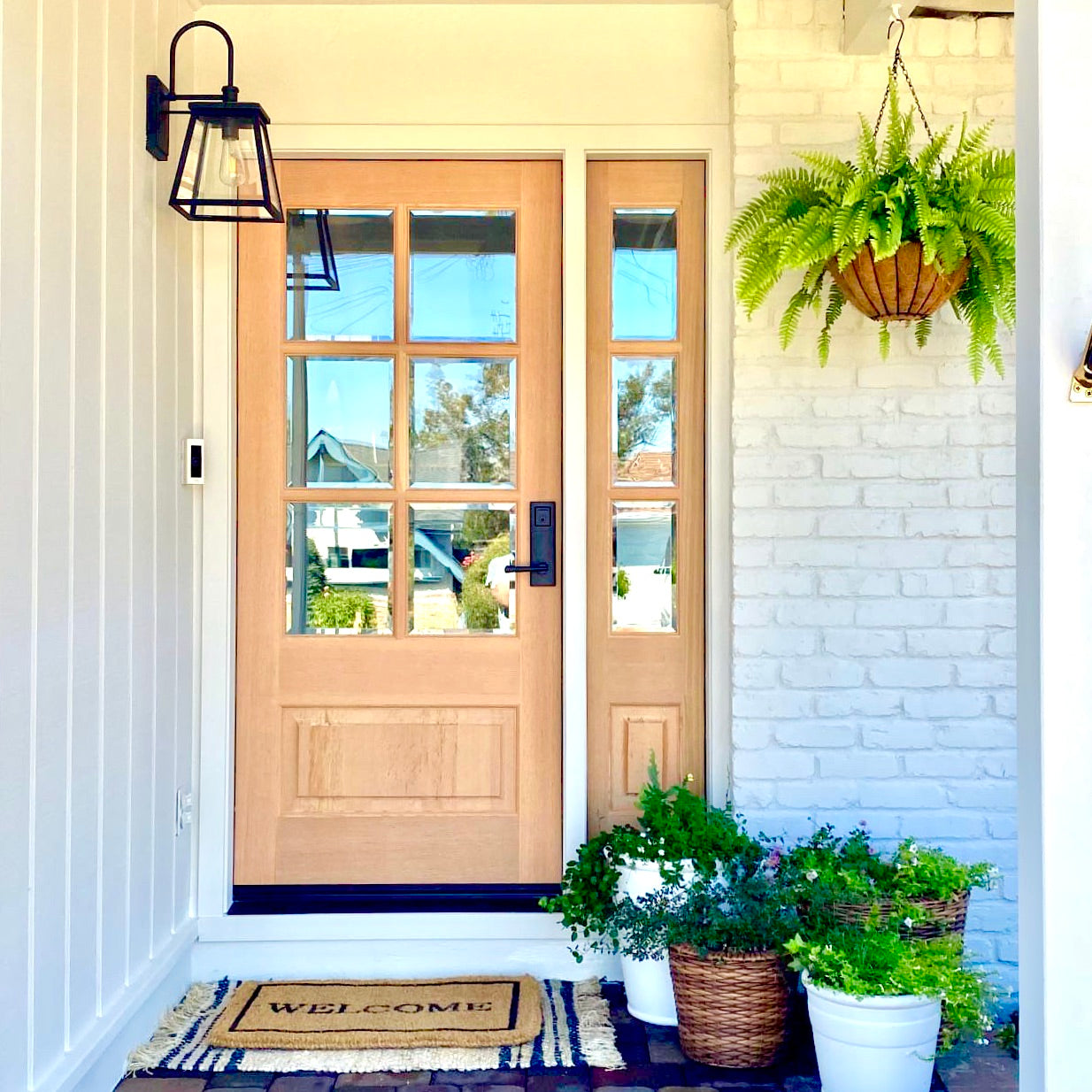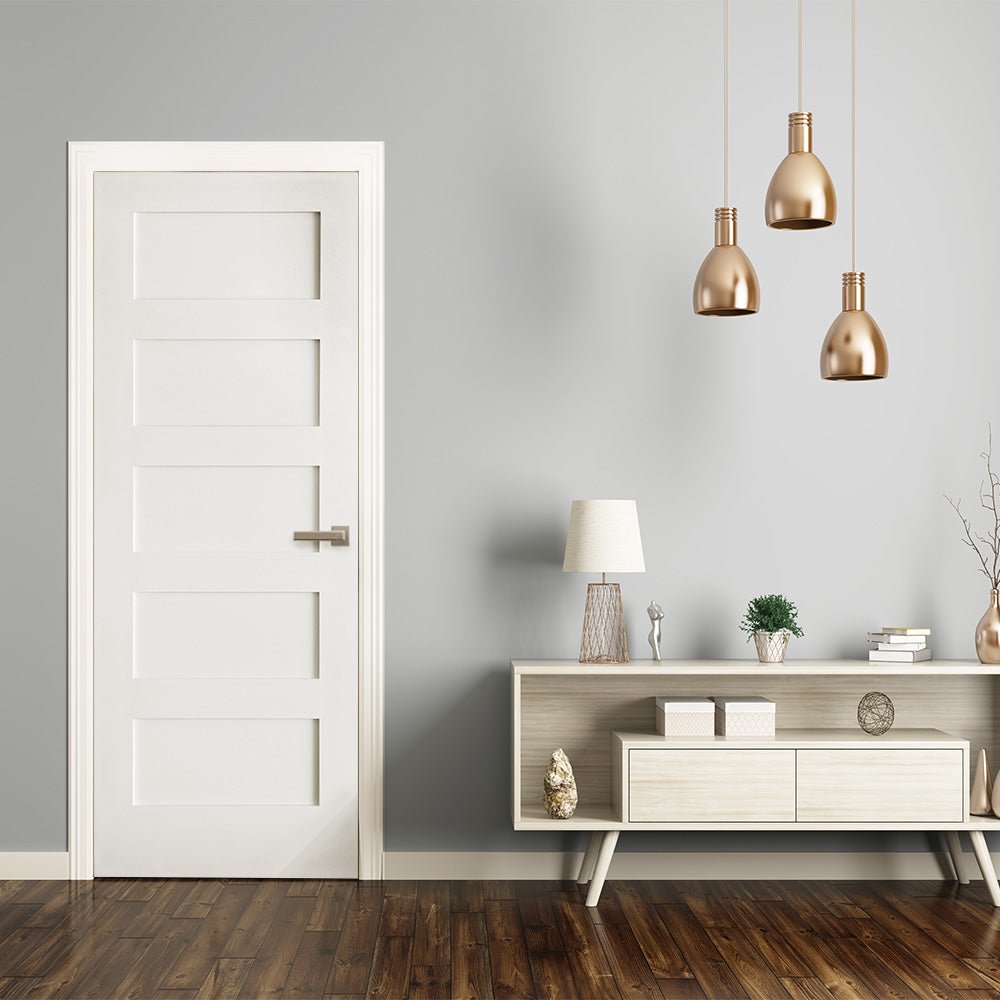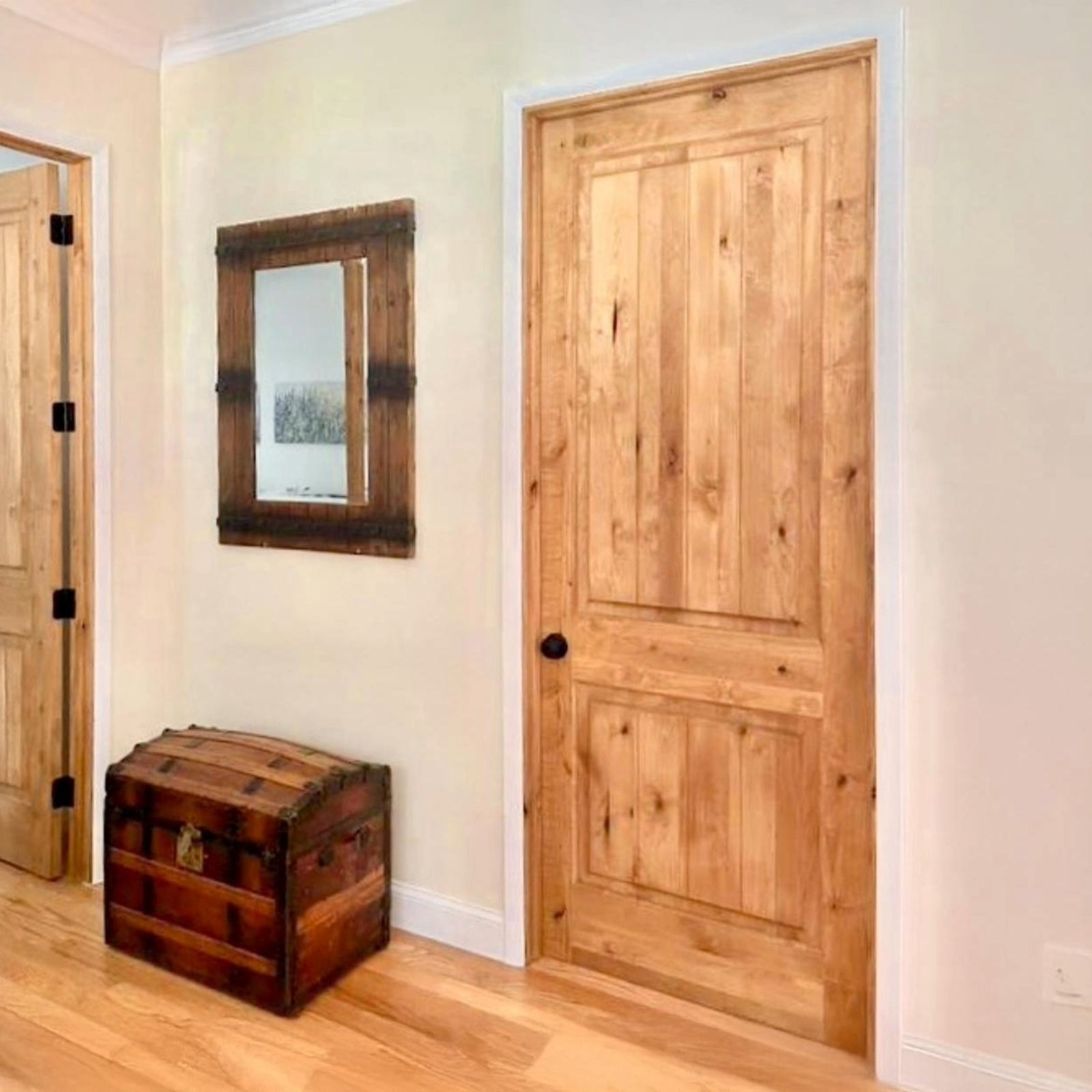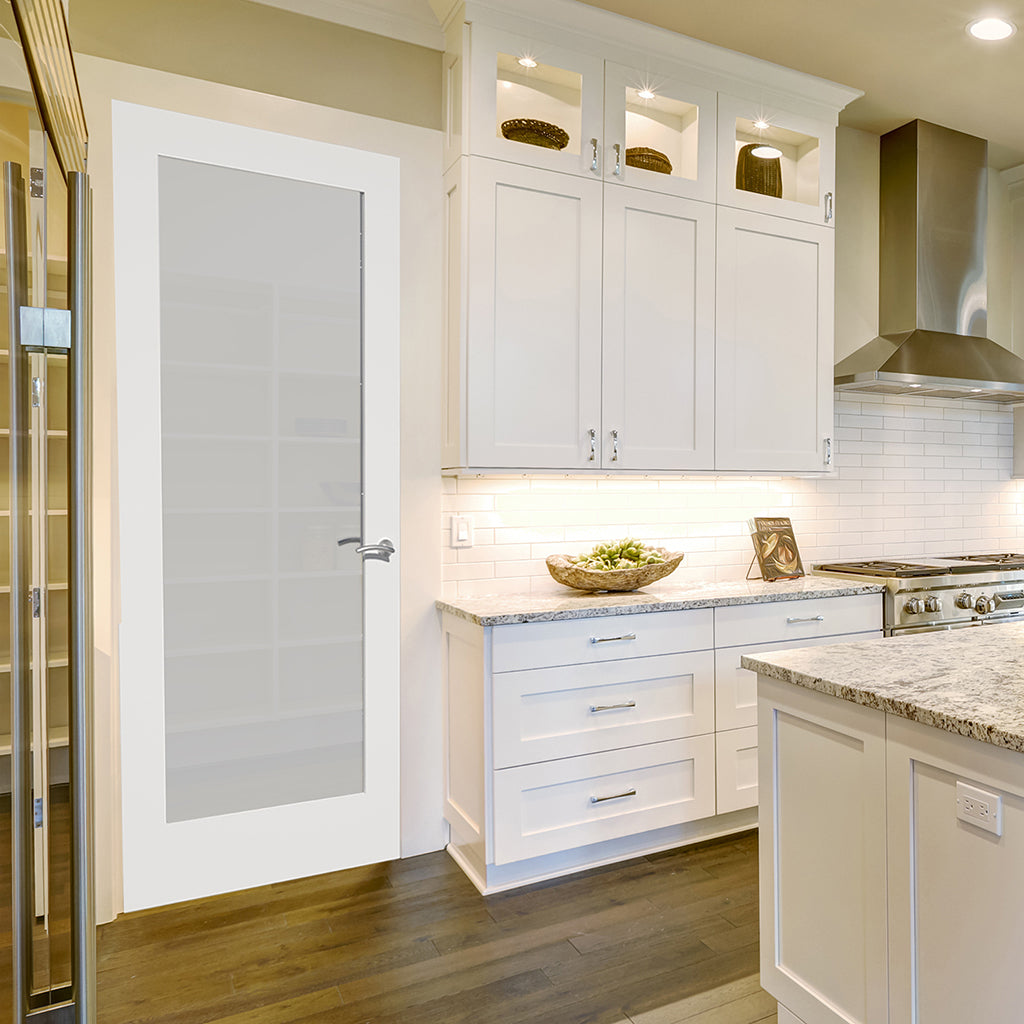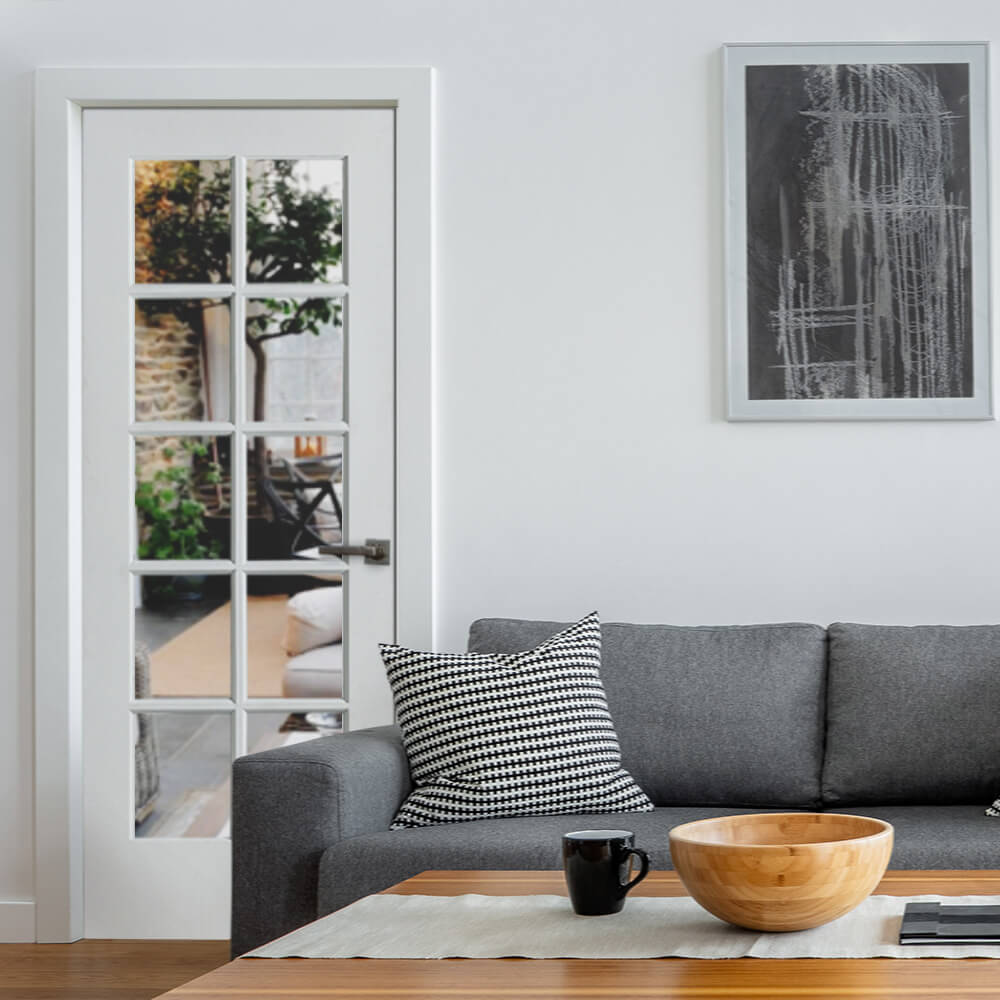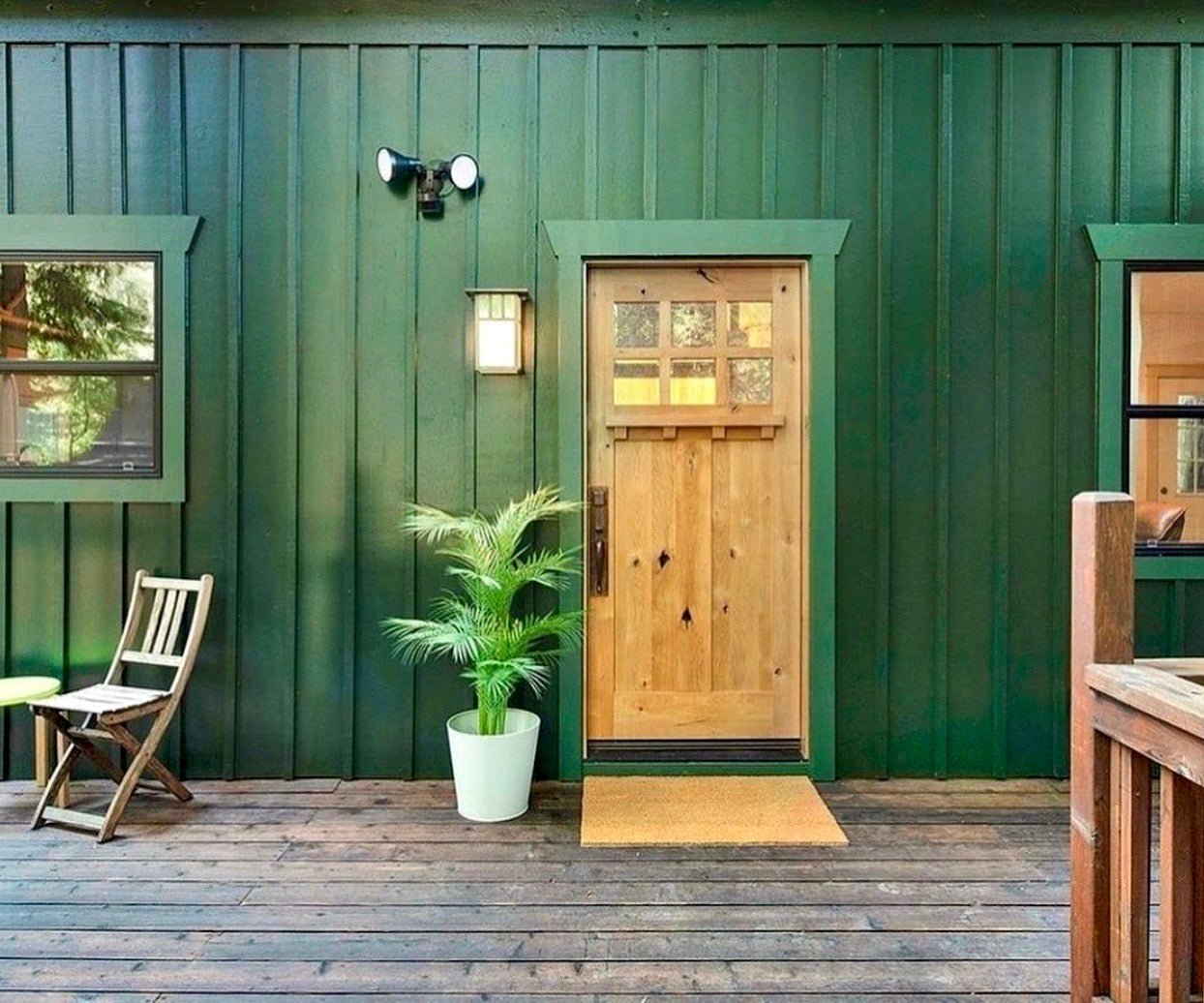Why choose a wood door?
Your front door is one of the first things people see when they approach your home and can send a warm, welcoming vibe - or a very unwelcome one.
A wood exterior door looks unique, sophisticated, and timeless. A well-designed wood door provides lasting durability and strength that works well with architectural styles that will come and go throughout the years. Wood doors also offer insulating thermal protection for those who live in colder climates. Because wood is a natural element, it tends to age better than man-made materials such as steel.
Wood doors are able to withstand extremely hot or cold temperatures, yet still require an overhang to reduce warping, moisture, and sun damage. They can be designed to go with any home style including Craftsman, Mediterranean, French, Farmhouse, Contemporary, Modern, Scandinavian, Rustic, Mid Century, or Traditional.

Douglas Fir 6 Lite Clear Glass Exterior Door
What is the best wood for your exterior door?
Alder
Alder is a great choice for exterior doors because it features a pronounced wood grain with dark distinctive knots that provide unique texture and personality.
This hardwood is durable and rot-resistant, and also accepts stains very easily, so your door can be any shade ranging from a pale cream to a rich mahogany color. Alder wood doors are generally reasonably priced. Check out our selection of knotty alder wood doors here.
Cherry
Generally stained a darker tone, cherry hardwood is red in color. Characterized by its smooth texture, cherry is a beautiful choice for traditional homeowners who want a darker wood. Cherry is one of the more expensive woods, so it may not be your first choice when working on your home improvement project.
We also offer a red chestnut or red mahogany stain, which is a great alternative to achieving a warm, cherry-like appearance.
Hemlock
Although hemlock is a softer wood, its pale reddish-brown tint and straight wood grain make it a popular choice for homeowners. It is highly recommended to paint or stain hemlock doors to protect them from insects and rot, and we recommend using a fine sandpaper grain for any at-home projects.
One of our most popular doors is a Modern Hemlock Glass Door which you can view here.
Hickory
Hickory is one of the hardest woods available for doors, with one of the most distinctive wood grains which are leftover from animal marks and mineral streaks as the tree is growing.
The hickory tree is slow to cultivate and takes longer to dry out than other species, making it a more expensive choice, but the color variation and pinkish-brown toned wood grain make for an eye-catching piece.
Douglas Fir
One of the most popular woods used for residential fencing, doors, and decking in the United States is Douglas fir. Despite being a softwood, its dimensional strength stands up well to wind and earthquakes.
Douglas fir's straight wood grain has a consistent and even texture that is easy to paint or stain, which will ensure your door's beauty and strength for generations.
You can check out our Douglas Fir Wood Door collection here.
Mahogany
Why is mahogany consistently a favorite among home builders? Mahogany wood is known for its rich, warm color, and is one of the hardest and most durable woods available on the market. It won't swell, warp, or shrink as easily as other wood species.
Because of its desirability, mahogany wood was pushed to the verge of extinction by the early 19th Century and can still cost exorbitant amounts to source today.
Oak
Oak is one of the most durable hardwoods with a dramatic wood grain. It stains easily and weathers well against temperature and moisture without warping.
So why doesn't Krosswood Doors use oak? Over time, oak wood can turn darker and appear to be discolored because of its naturally high tannic acid content. Tannic acid can also rust nails and hardware more easily. Because of this, we prefer knotty alder, but many builders produce beautiful, long-lasting results with oak!
Maple
Maple hardwood has a beautiful, naturally dark wood grain that is hard to beat. It is very strong and relatively low-cost for its value. Maple is more frequently used in interiors, as the wood will lighten with exposure to the elements and also has a tendency to shrink over time.
For this reason, we don't recommend using maple wood as an exterior door.
How to maintain your wood door
An adequate overhang and intermittent cleaning and re-staining is critical to the life of a wood door. We talk about maintaining your exterior wood doors here. Follow the manufacturer's instructions in order to prolong the life of your wood doors. To clean your wood exterior door, wash it with a damp sponge to remove surface dirt.
You can also apply lemon oil or orange oil to wood for a natural shine that maintains the wood's moisture. Orange oils are the best choice as they are less abrasive on wood. Choose a lemon oil with minimal silicone and waxes as they tend to build up over time, making it difficult when it comes time to refinish your wood door.

Mediterranean Knotty Alder Arch Top Speakeasy Exterior Door
The post How to Choose the Best Wood for your Exterior Door first appeared on Krosswood.com.
All links are unaffiliated, except for Krosswood.com and Krosswood Doors through HomeDepot.com.
Sources:
Image 1: Craftsman Knotty Alder 6 Lite Glass Exterior Door with Dentil Shelf
https://www.timberblogger.com/
https://www.woodcraft.com/pages/wood
https://norcrosssupply.com/lumber-supply/
https://www.hunker.com/13403634/how-to-clean-wood-furniture-with-lemon-oil

